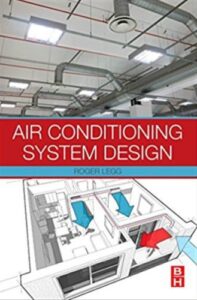Air Conditioning System Design 1st Edition
Air Conditioning System Design 1st Edition
Air Conditioning System Design summarizes essential theory and then explains how the latest air conditioning technology operates. Load calculations, energy efficiency, and selection of technology are all explained in the context of air conditioning as a system, helping the reader fully consider the implications of design decisions.
Air Conditioning System Design 1st Edition is no longer regarded as the luxury that it once was, and there is now an increasing demand for applications ranging through domestic, commercial, industrial, and transport and for specialized installations such as hospitals, research facilities, data centres, and clean rooms. The engineering systems in modern buildings and installations make a significant contribution to the overall building performance in terms of energy use. Systems need to be increasingly sophisticated in their design, installation, operation, control, and maintenance at a time when there is increasing pressure for greater energy efficiency.
You can also Read Air Conditioning Engineering Fifth Edition
Air is the working fluid for air conditioning systems. It is therefore important for the engineer to have a thorough understanding of the properties of air, before going on to consider the processes that occur when air passes through the various plant items that make up systems.
Atmospheric pressure may be measured by using a number of instruments. In the laboratory, it is usual to use a Fortin barometer, while for site work an aneroid barometer is the most usual instrument. For continuous recording, a barograph is used.
Air Conditioning System Design 1st Edition Contents
1. Properties of Humid Air
2. Air Conditioning Processes
3. Indoor Design Conditions
4. Outdoor Design Conditions
5. Room Heat Gains, Air Diffusion, and Flow Rates
6. All-Air Systems
7. Unitary Systems
8. Chilled Beams and Radiant Ceiling Systems
9. Refrigeration and Heat Pump Systems
10. Humidifiers and Cooling Towers
11. Exhaust Air Heat Recovery
12. Air Filters
13. Fluid Flow: General Principles
14. Ducted Air Systems
15. Fans
16. Balancing Fluid Flow Systems
17. Control Dampers and Valves
18. Energy Consumption
19. Commissioning, Operation, and Maintenance

Comments are closed.